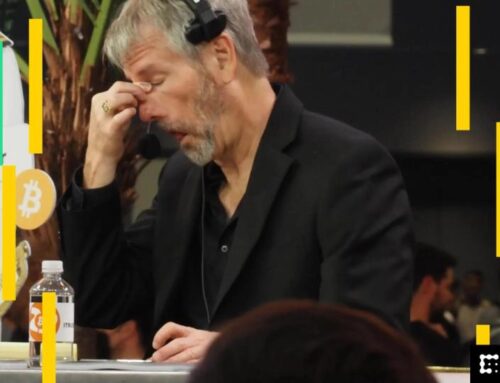California Cannabis: Setting The Record Straight On The One-Acre Cap
May 14, 2025
Steve DeAngelo is no small figure in the evolution of the commercial cannabis sector – many have called him the ”Father of the Legal Cannabis Industry.“ I have watched Steve from afar and have known him for many years. I have worked alongside him on various projects over the years from Mexico City, MX to Roanoke, VA, and many places in between. Recently, I sat down with him to talk about the state of the California cannabis industry. In doing so, one particular issue came up and really seemed to perturb Steve – the One-Acre Cannabis Cap. So I dove beneath the surface to explore this issue more deeply.
For years, a persistent myth has circulated in cannabis industry circles: that Steve DeAngelo—founder of Harborside and one of the most visible figures in cannabis reform—was responsible for license stacking and the elimination of California’s one-acre cultivation cap. This myth first emerged in the wake of a 2017 article that did not take the full legislative history of license stacking into account, and was later repeated in other publications. A more fully informed understanding of the relevant law and regulations paints a very different picture.
As a cannabis attorney who has worked on policy across the U.S. and internationally, I’ve had a front-row seat to California’s legal evolution. The real story is not one of backroom lobbying or last-minute regulatory sabotage—it’s a story of legislative sequencing, local government action, and a state struggling to reconcile medical and adult-use cannabis systems.
The groundwork for license stacking in California began in October 2015, when lawmakers passed the Medical Cannabis Regulation and Safety Act (MCRSA). This framework allowed licensed dispensaries to cultivate up to four acres and permitted multiple licenses on a single property. It also gave local governments a deadline: establish your own cultivation rules or default to the state’s.
In the months that followed, Humboldt, Monterey, and several municipalities passed ordinances authorizing cultivation in excess of one acre. Humboldt allowed up to four acres per operator and up to twelve acres on some parcels. Cities like Desert Hot Springs, Coalinga, and San Jose approved unlimited license stacking or large-scale operations. In one instance, Coalinga sold a former prison to a cannabis company for more than $4 million.
Then came Proposition 64, passed by voters in 2016, legalizing adult-use cannabis. State agencies then set about reconciling the pre-existing medical cannabis regulations with the new adult-use law.
In April 2017, the California Department of Food and Agriculture (CDFA) issued draft regulations that stated: “The Department shall not restrict the total number of cultivation licenses a person is authorized to hold, provided the person’s total licensed canopy does not exceed four acres.” The term “person” included both individuals and businesses. Then, in June 2017, CDFA issued a Programmatic Environmental Impact Report reaffirming that policy, and in the same month the Legislature passed SB 94. It merged the state’s medical and adult-use systems under one law: the Medicinal and Adult-Use Cannabis Regulation and Safety Act (MAUCRSA). MAUCRSA formally eliminated the four-acre limit and reaffirmed that multiple licenses could be held on a single parcel—legalizing unlimited license stacking statewide.
A key element in the one acre myth was the idea that Steve supposedly influenced CDFA to remove the one-acre cap in November 2017, but by the time CDFA issued emergency regulations in November 2017, the legal foundation for license stacking was well established. Industrial-scale operations were already underway. Jurisdictions had issued entitlements, and state agencies would have faced legal liability had they attempted to reverse course. Not long thereafter, Santa Barbara County unveiled a licensing program with a cap of 186 acres.
Steve DeAngelo never asked anyone to remove a one-acre cap. He never authorized a cultivation plan beyond Harborside’s four-acre entitlement. In fact, Harborside only began cultivation after the City of San Jose mandated full vertical integration for dispensaries, back in 2014. Their farm was built not to dominate the market, but to comply with local law. In order to build out that farm, they brought in investors, and Harborside’s legal name was changed to FLRish.
Yes, FLRish lobbied in 2017—but not on canopy limits. Their efforts focused on keeping doors open for people with cannabis convictions, including DeAngelo himself, who had a prior felony from the pre-legalization era. They also opposed a regulatory scheme that would have forced all transactions through third-party distributors, hurting the small growers FLRish had supported for years.
Steve explained, “the new regulations posed two existential threats, two knives at our throats. One was the felony exclusion—it would have made it impossible to convert FLRish’s medical cannabis licenses into adult-use licenses. And the mandatory distribution scheme would have forced us to sever our relationships with the 500 small growers who supplied FLRish, and instead purchase all our cannabis from distributors who knew nothing about the plant.”
At CDFA, FLRish weighed in on real compliance issues: provisional licensing, CEQA timelines, canopy definitions, pesticide and testing standards, track-and-trace rollouts, labor safety, and environmental protocols. There was no ask to expand cultivation limits.
Now, with federal cannabis reform looming, it’s time to set the record straight. The future of this industry depends on fact-based policymaking and mutual respect—not finger-pointing rooted in old myths.
License stacking in California was the product of years of legislative development, local ordinances, and public regulatory processes—not the actions of one man. To suggest otherwise isn’t just incorrect—it does a disservice to the movement that made legalization possible.
Search
RECENT PRESS RELEASES
Related Post




